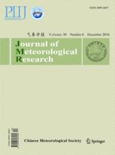
Journal of Meteorological Research
Scope & Guideline
Empowering Research in Meteorology and Ocean Engineering.
Introduction
Aims and Scopes
- Meteorological Modeling and Simulation:
The journal publishes research on numerical weather prediction models, including advancements in model physics and parameterization schemes, aimed at improving forecast accuracy and understanding atmospheric processes. - Climate Variability and Change:
Studies addressing long-term climate trends, variability, and their impacts on regional weather patterns, emphasizing the role of anthropogenic influences and natural climatic oscillations. - Remote Sensing and Observational Techniques:
Research leveraging satellite and ground-based observational data to analyze atmospheric phenomena, including precipitation, temperature, and pollution, highlighting advancements in remote sensing technologies. - Extreme Weather Events and Their Impacts:
Investigations into the mechanisms, predictions, and socio-economic impacts of extreme weather events such as heavy rainfall, droughts, and tropical cyclones, contributing to disaster risk reduction strategies. - Atmospheric Chemistry and Pollution:
Research focusing on the interactions between meteorological conditions and atmospheric composition, including studies on air quality, aerosol impacts, and greenhouse gas concentrations. - Machine Learning and Data Assimilation:
Innovative approaches utilizing machine learning techniques for weather forecasting and climate prediction, alongside advancements in data assimilation methods for improving model accuracy.
Trending and Emerging
- Integration of Machine Learning in Meteorology:
An increasing number of studies are utilizing machine learning techniques for predictive modeling and data analysis, reflecting a trend towards leveraging artificial intelligence to enhance forecasting accuracy and efficiency. - Impacts of Climate Change on Extreme Weather:
There is a growing focus on understanding the connections between climate change and the frequency/intensity of extreme weather events, underscoring the urgency of addressing climate-related risks. - Multiscale Interactions in Weather Systems:
Research is increasingly exploring interactions across different spatial and temporal scales, emphasizing the complexity of meteorological phenomena and the need for integrated modeling approaches. - Urban Climate Studies:
With rising urbanization, there is a notable increase in studies addressing urban heat islands, air quality, and the impacts of urban planning on local climates, reflecting the importance of urban meteorology. - Cross-disciplinary Approaches to Weather and Climate:
Emerging themes emphasize the integration of meteorological research with other fields such as ecology, health, and socio-economics, highlighting the interdisciplinary nature of contemporary climate challenges.
Declining or Waning
- Traditional Statistical Methods for Weather Prediction:
There is a noticeable decline in the reliance on conventional statistical models for weather forecasting, as researchers increasingly favor machine learning and data-driven approaches that offer improved predictive capabilities. - Basic Climate Observational Studies:
Studies that primarily focus on basic observational data without incorporating advanced modeling or analytical techniques are becoming less common, as the field moves towards more integrative and sophisticated methodologies. - Regional Climate Studies with Limited Scope:
Research that examines regional climate impacts in isolation, without consideration of broader climatic interactions or global influences, is gradually losing traction in favor of more comprehensive, global perspectives.
Similar Journals
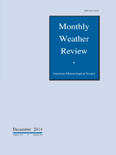
MONTHLY WEATHER REVIEW
Pioneering Knowledge in Weather AnalysisMONTHLY WEATHER REVIEW, published by the American Meteorological Society, is a leading journal in the field of atmospheric science, recognized for its rigorous peer-reviewed articles that contribute significantly to the understanding of weather patterns and climate systems. With an impressive Q1 ranking in the 2023 category quartiles and a strong standing (#41 out of 148) in the Earth and Planetary Sciences Scopus rankings, the journal serves as an essential resource for researchers, professionals, and students alike. Although it does not currently offer open access, its comprehensive coverage of meteorological research spanning from 1960 to 2024 makes it invaluable for those seeking to stay at the forefront of developments in weather analysis and prediction. Situated in Boston, Massachusetts, this journal not only showcases pioneering research but also emphasizes the importance of collaborative efforts in the meteorological community, ultimately contributing to advancements in our understanding of atmospheric phenomena.
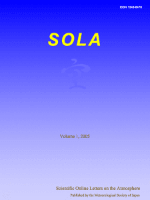
SOLA
Transforming the landscape of meteorological scholarship.SOLA is a distinguished journal published by the Meteorological Society of Japan, focusing on cutting-edge research in the field of atmospheric science. Since transitioning to an Open Access model in 2018, SOLA aims to facilitate the dissemination of knowledge and foster collaboration among researchers from around the globe. With a proud history spanning from 2005 to 2024, the journal has earned a reputation for high-quality publications, achieving a Q1 ranking in Atmospheric Science according to the 2023 category quartiles. Although its H-Index is currently not available, SOLA is recognized in Scopus rankings, standing at #82 out of 148 in Earth and Planetary Sciences, demonstrating its impact in the field. With its headquarters in Tokyo, Japan, and an unwavering commitment to advancing scientific understanding, SOLA serves as an essential resource for researchers, professionals, and students dedicated to exploring the complexities of atmospheric phenomena.
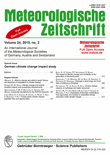
METEOROLOGISCHE ZEITSCHRIFT
Pioneering Research for a Changing ClimateMETEOROLOGISCHE ZEITSCHRIFT is a distinguished academic journal dedicated to the field of meteorology and atmospheric sciences, published by E SCHWEIZERBARTSCHE VERLAGSBUCHHANDLUNG. With an ISSN of 0941-2948 and an E-ISSN of 1610-1227, this journal has been an invaluable resource for researchers, professionals, and students since its inception. It has embraced an Open Access model since 2014, promoting wider dissemination of research findings. Based in Stuttgart, Germany, the journal is recognized for its rigorous peer-review process and is currently positioned in the Q3 quartile for Atmospheric Science as per the 2023 category rankings. Additionally, it ranks #97 out of 148 in the Scopus database, placing it in the 34th percentile among Earth and Planetary Sciences. Covering a broad spectrum of topics relevant to meteorology, METEOROLOGISCHE ZEITSCHRIFT serves as a platform for innovative research and theoretical contributions, aiming to advance understanding of atmospheric phenomena and their implications for climate and weather. Researchers and practitioners alike will find valuable insights within its pages, making it a significant asset in the landscape of meteorological scholarship.

JOURNAL OF CLIMATE
Pioneering Research for a Sustainable FutureThe JOURNAL OF CLIMATE, published by the American Meteorological Society, stands as a premier source of cutting-edge research in the field of atmospheric science. With an impressive impact factor reflecting its rigorous peer-review process, this journal ranks in the top 20 of its category according to Scopus, with a remarkable percentile of 88th. Since its inception in 1988, the JOURNAL OF CLIMATE has been a vital platform for disseminating high-quality studies that deepen our understanding of climate systems and their global implications. It serves a diverse audience of researchers, professionals, and students interested in climate variability, climate change, and the dynamics of atmospheric processes. Though not an open-access journal, it offers wide accessibility through numerous academic repositories. As it continues to publish essential findings up to 2024, this journal plays a crucial role in advancing knowledge and fostering dialogue within the atmospheric science community.
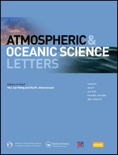
Atmospheric and Oceanic Science Letters
Connecting Global Insights on Climate and Ocean DynamicsAtmospheric and Oceanic Science Letters is a premier open-access journal dedicated to the rapidly evolving fields of atmospheric science and oceanography. Published by KEAI PUBLISHING LTD, this journal aims to foster research dissemination and collaboration by providing a platform for high-quality research articles, reviews, and case studies that address critical issues impacting atmospheric and oceanic systems. With an impressive impact factor reflecting its esteemed position—including being ranked Q2 in Atmospheric Science and Q1 in Oceanography in 2023—this journal is an essential resource for researchers, professionals, and students alike. The journal's Open Access model, adopted since 2016, ensures that groundbreaking research is readily available to a global audience, enhancing knowledge transfer and facilitating innovative solutions to environmental challenges. Operating out of the United Kingdom and reaching an international readership, Atmospheric and Oceanic Science Letters plays a pivotal role in shaping our understanding of the interactions between the atmosphere and oceans, making it a vital publication for anyone aiming to stay at the forefront of these dynamic scientific fields.

ATMOSFERA
Navigating the Complexities of Climate and EnvironmentATMOSFERA is a prestigious journal published by CENTRO CIENCIAS ATMOSFERA UNAM, dedicated to advancing the field of Atmospheric Science. With an ISSN of 0187-6236 and an E-ISSN of 2395-8812, this bilingual journal has been a vital resource for researchers since its inception in 1988. Located in Mexico City, the journal serves as a platform for high-quality original research, reviews, and case studies that explore various atmospheric phenomena, climate issues, and environmental challenges. Although currently categorized in the Q4 quartile of Atmospheric Science, ATMOSFERA aims to contribute to the growing body of knowledge in the field and improve its ranking over the next few years, emphasizing rigorous scientific inquiry and fostering collaboration among scholars. Its accessibility and commitment to open communication make it an essential reference for professionals and students striving to understand and address complex atmospheric dynamics.
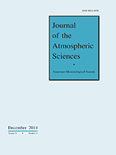
JOURNAL OF THE ATMOSPHERIC SCIENCES
Unveiling the Dynamics of Weather and ClimateJOURNAL OF THE ATMOSPHERIC SCIENCES, published by the American Meteorological Society, stands as a premier resource for the latest research in atmospheric sciences. With an impressive impact factor and a Q1 ranking in the Atmospheric Science category for 2023, this journal is recognized for its rigorous peer-reviewed articles that contribute to the understanding and advancement of weather, climate, and dynamics of the atmosphere. Established in 1969, the journal has maintained high academic standards and delivers valuable insights spanning over five decades, thus catering to an audience of researchers, professionals, and students alike. Although it does not offer open-access options, it provides critical access through various institutional subscriptions, ensuring that significant research findings are disseminated widely within the scientific community. The journal's address is located at 45 Beacon St, Boston, MA 02108-3693, United States, and it accepts submissions and articles until 2024, continuing its legacy of excellence in atmospheric research.

Tethys-Journal of Mediterranean Meteorology & Climatology
Unraveling the Secrets of Mediterranean MeteorologyTethys - Journal of Mediterranean Meteorology & Climatology, published by the Associació Catalana de Meteorologia (ACAM), serves as a specialized platform dedicated to advancing the study of meteorological and climatological phenomena within the Mediterranean region. With a Scopus Rank of #94 out of 148 in the field of Atmospheric Science, this journal is positioned in the Q4 category, reflecting a growing recognition among researchers focused on regional climate variations and environmental challenges. Established in 2012 and publishing through 2023, Tethys aims to provide open access to high-quality research articles that address critical issues impacting climate and weather patterns, thus contributing to a deeper understanding of Mediterranean meteorology. The journal’s mission aligns closely with the increasing global emphasis on climate studies and serves as an essential resource for academics, practitioners, and students dedicated to sustainably addressing the environmental and climatic challenges faced by this diverse and dynamic region.

Asia-Pacific Journal of Atmospheric Sciences
Unlocking the Secrets of Our AtmosphereWelcome to the Asia-Pacific Journal of Atmospheric Sciences, a leading publication in the field of atmospheric science, published by the Korean Meteorological Society. With an ISSN of 1976-7633 and an E-ISSN of 1976-7951, this journal has been a cornerstone for researchers and practitioners in the atmospheric sciences since its inception in 2008. Recognized for its rigorous peer-reviewed articles, it holds a commendable Q2 quartile ranking in 2023 and is placed at the 51st rank out of 148 in the Earth and Planetary Sciences, reflecting its impact within the community with a 65th percentile. The journal features a broad scope encompassing meteorology, climatology, and environmental sciences, making it an essential resource for scholars and industry experts alike. As an open access journal, it ensures that groundbreaking research is widely accessible, fostering collaboration and innovation across the Asia-Pacific region and beyond. Explore the latest findings and advancements in atmospheric sciences and contribute to the dynamic field of climate research through the journal's engaging content.

JOURNAL OF GEOPHYSICAL RESEARCH-ATMOSPHERES
Unraveling the complexities of Earth's atmospheric processes.JOURNAL OF GEOPHYSICAL RESEARCH-ATMOSPHERES, published by the American Geophysical Union, is a leading peer-reviewed journal dedicated to advancing our understanding of atmospheric science and related disciplines. With an impressive impact factor and consistently holding a Q1 ranking across key categories including Atmospheric Science and Geophysics, this esteemed journal caters to a global audience of researchers, professionals, and students eager to explore groundbreaking studies and insights. The journal covers a comprehensive scope of topics, from climate dynamics to atmospheric processes, enhancing knowledge and informing practices within the realm of Earth and Planetary Sciences. With its strong emphasis on quality research, it remains a vital resource for those engaged in unraveling the complexities of our planet’s atmosphere. Explore this journal to stay abreast of significant developments and foster a deeper understanding in this ever-evolving field.